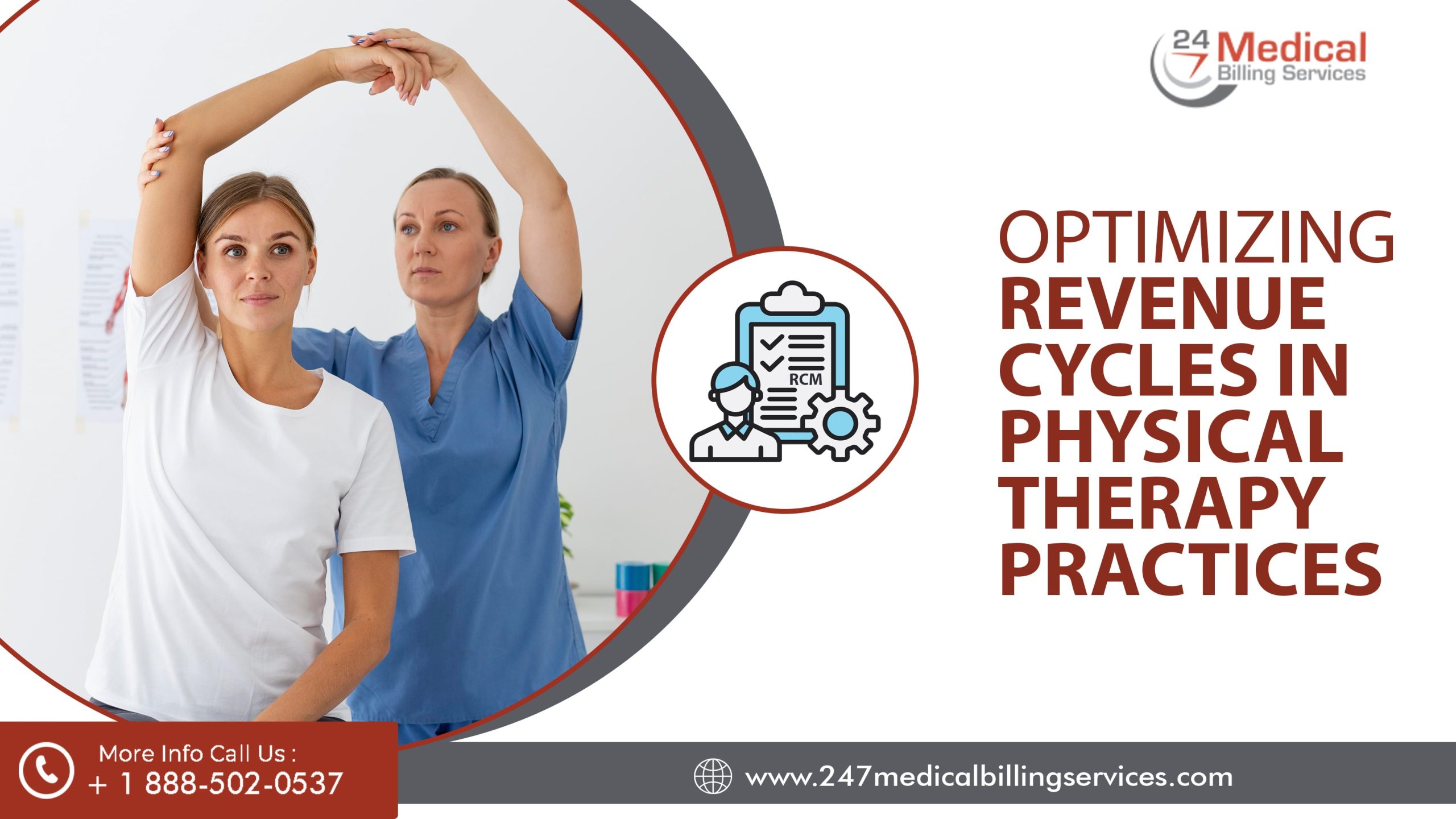Optimizing revenue cycles has become paramount for physical therapy practices in the healthcare industry, where financial stability is as crucial as providing quality patient care. Revenue Cycle Optimization (RCO) stands as a strategic approach to streamlining financial processes, ensuring billing efficiency, reducing errors, and maximizing revenue capture. However, the journey towards RCO is fraught with challenges, from navigating complex regulations to grappling with evolving payment models and technological integration.
Therefore, it has become crucial to understand these challenges and the significance of RCO. This blog aims to provide a comprehensive roadmap explicitly tailored for physical therapy practices by leveraging expert insights and data-driven strategies. Let’s understand step-by-step approaches to overcome hurdles and unlock the full potential of revenue cycles.
Challenges in Revenue Cycle Optimization for Physical Therapy Practices
-
Complex Healthcare Regulations
Physical therapy practices must navigate a labyrinth of regulations, including HIPAA compliance, Medicare billing rules, and
payer-specific requirements. Keeping abreast of these regulations while ensuring compliance can be daunting.
The shift towards value-based care and alternative payment models introduces complexities in reimbursement processes. Physical therapy practices need to adapt to these changes while optimizing revenue streams.
-
Coding and Billing Practices Changes
Maintaining accurate coding practices is challenging with frequent updates to coding systems like ICD-10 and CPT. Errors in coding can lead to claim denials and revenue loss.
-
Inefficient Data Management
Effective RCO relies on robust data management systems to track patient encounters, billing processes, and financial performance. Inadequate data management hampers decision-making and revenue optimization efforts.
-
Human Errors and Technology Integration
Manual errors in billing and documentation can result in claim denials and delayed payments. Moreover, integrating technology solutions seamlessly into existing workflows poses implementation challenges.
Did you know?
According to a survey, practices leveraging data analytics witness significant improvements in revenue cycle metrics. On average, these practices experience a 10-15% enhancement in clean claim rates and a notable reduction of 20-30% in claim denials. Such insights underscore the transformative potential of data-driven approaches in RCO.
Data-driven approaches for Physical Therapists
Implementing automated systems for billing and coding can significantly streamline revenue cycles in physical therapy practices. This includes using software solutions that automate claim submissions, payment posting, and denial management tasks. Automation reduces the likelihood of human error, speeds up the billing process, and ensures that claims are submitted accurately and promptly, ultimately improving cash flow.
-
Optimize your coding and documentation
Efficient coding and thorough documentation are crucial for maximizing
revenue cycles in physical therapy practices. By ensuring that services provided are accurately coded according to the latest guidelines and documentation requirements, practices can avoid claim denials and audits while capturing all billable services. Regular training for staff on coding updates and documentation best practices is essential to maintain compliance and optimize reimbursement.
Negotiating favorable contracts with payers can have a significant impact on revenue cycles. Physical therapy practices should analyze their payer contracts to ensure they are receiving appropriate reimbursement rates for services rendered. Negotiating higher rates or better terms can improve revenue and profitability. Additionally, practices should regularly review contracts to identify opportunities for renegotiation or termination to maximize revenue.
-
Collect your copays and deductibles
Effective
patient billing and collection processes are essential for optimizing revenue cycles. Practices should implement clear financial policies and procedures for collecting copays, deductibles, and coinsurance at the time of service. Utilizing technology such as electronic payment processing and patient portals can make it easier for patients to pay their bills promptly, reducing accounts receivable and improving cash flow.
Data analysis plays a critical role in identifying trends, opportunities, and areas for improvement in revenue cycles. Physical therapy practices should regularly analyze key performance indicators such as revenue per visit, collection rates, and days in accounts receivable to assess the health of their revenue cycle. By identifying patterns and outliers in the data, practices can make informed decisions to optimize billing and coding processes and improve overall financial performance.
The Bottom Line- Optimize RCM for PTs
Seeking guidance from
revenue cycle management provider for PTs can provide valuable insights and recommendations for optimizing billing and coding processes. These experts can conduct assessments of current workflows, identify inefficiencies, and recommend strategies for improvement. With the option of outsourcing to 24/7 Medical Billing Services, leveraging expert guidance can help physical therapy practices navigate complex billing regulations and maximize revenue potential.
Outsourcing the revenue cycle functions to such experts can offer significant benefits for physical therapy practices. This may include outsourcing coding, billing, and accounts receivable management tasks to experienced third-party providers. Outsourcing allows practices to leverage the expertise and resources of dedicated professionals while reducing administrative burden and overhead costs. Additionally, outsourcing can help practices stay up-to-date with industry changes and regulations, ensuring compliance and maximizing revenue potential.


.png)